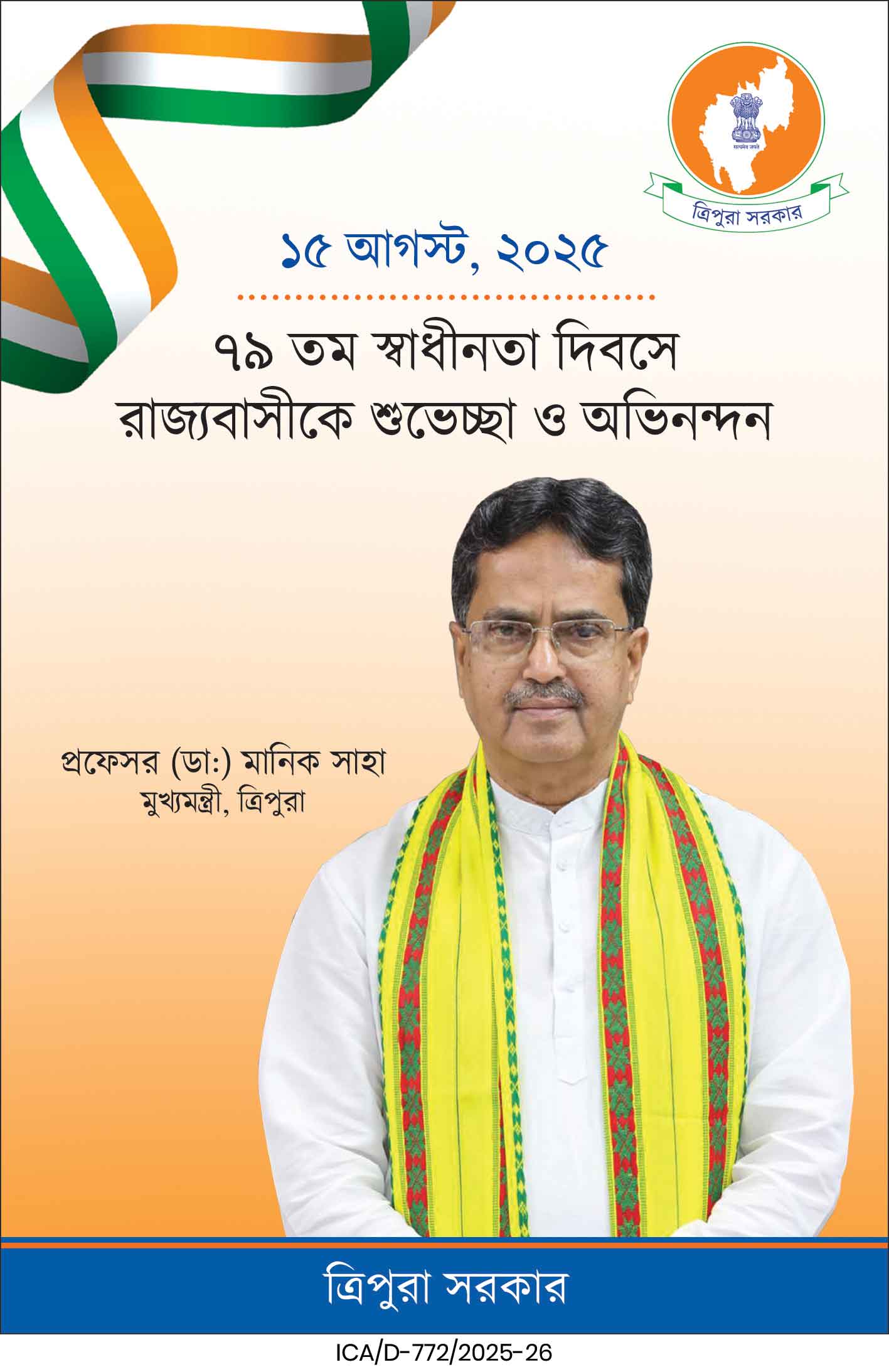Tripura Electricity Regulatory Commission (TERC) announces the 2025-26 power tariff with no hike for ordinary consumers, expanded benefits for Kutir Jyoti households, new fixed-charge rules, remote-area rebates, and optional green energy support to promote equity, affordability and sustainability.
The Tripura Electricity Regulatory Commission (TERC) on Monday released the power tariff order for the financial year 2025–26, announcing that energy charges for ordinary domestic consumers will remain unchanged. The new tariff structure, which takes effect on November 1, 2025, aims to protect low-income households from rising living costs while promoting equitable and sustainable electricity access across the state.
According to the tariff order, energy charges—calculated per unit of electricity consumed—will remain the same as last year, ensuring that the monthly bills of ordinary domestic consumers do not increase. At a time when inflation and higher commodity prices have been affecting household budgets, the commission’s decision is seen as a major relief for the average electricity user.
Major Relief for Kutir Jyoti Beneficiaries
One of the most notable changes announced by TERC is the expansion of benefits under the Kutir Jyoti scheme, which supports economically weaker households. The commission has increased the permissible connected load for Kutir Jyoti connections from 120 watts to 500 watts, marking a significant upgrade designed to meet the basic needs of modern households.
In addition to this, the monthly consumption ceiling has been doubled from 15 units to 30 units. This allows beneficiaries to use essential appliances such as LED lights, fans and phone chargers without the fear of rising electricity expenses. The enhancement is expected to provide greater comfort, improve quality of life and support energy access for thousands of impoverished families living in rural and semi-urban pockets of Tripura.
TERC officials said the move will enable poor households to run small, essential devices without crossing the subsidized threshold, thereby keeping their electricity bills affordable and predictable.
Revised Fixed Charge Mechanism for Transparency
To ensure fairness and transparency in billing, TERC has revised the fixed charge system across consumer categories. Under the new structure, fixed charges will be levied based on the connected load (measured in kilowatts) rather than on a flat per-connection basis.
According to the commission, this shift will align the charges more accurately with the actual electrical capacity made available to each consumer. By linking fixed fees to connected load, TERC aims to discourage excessive, unused load bookings while promoting responsible usage and infrastructure planning. This change is also expected to bring more clarity to billing and reduce disputes related to fixed charges.
10% Rebate for Remote-Area Service Providers
In a significant step toward improving services and economic activity in remote and difficult-to-access areas, the tariff order introduces a 10 per cent rebate for specified consumer categories operating in far-flung regions. The rebate will be available to:
-
Hospitals
-
Homestays
-
Business units run by women’s self-help groups
-
Mobile communication towers
The commission said the decision is aimed at boosting healthcare delivery, expanding rural tourism, supporting women’s entrepreneurship and strengthening digital connectivity in remote locations that often suffer from limited infrastructure and higher operational challenges.
By easing the financial burden on these essential services, the state hopes to encourage more development activity and improve the quality of life in geographically isolated regions.
Optional Green Power at Nominal Extra Charge
In line with national and global efforts to promote sustainable energy, TERC has introduced an optional green power component for consumers who wish to support clean-energy initiatives. Under this option, consumers can purchase green energy at an additional 75 paise per unit.
The commission said this voluntary contribution aims to encourage broader participation in the transition to renewable energy sources. As Tripura continues to diversify its energy mix through solar and other clean technologies, such consumer-driven initiatives are expected to play an increasing role.
Balanced Tariff Structure Focused on Equity
Overall, the 2025–26 tariff order reflects a balanced approach by maintaining affordability for ordinary consumers, enhancing targeted support for low-income families, promoting transparency in billing, and incentivizing development in remote areas. With the option to support green energy, consumers also have the opportunity to contribute to Tripura’s long-term sustainability goals.
| Also Read: Nine Civil Servants Get New Roles in Tripura Restructure Move |
The commission stated that the tariff reforms are guided by the principles of equity, transparency and inclusive development, ensuring that electricity remains accessible and affordable while supporting growth in key sectors.





